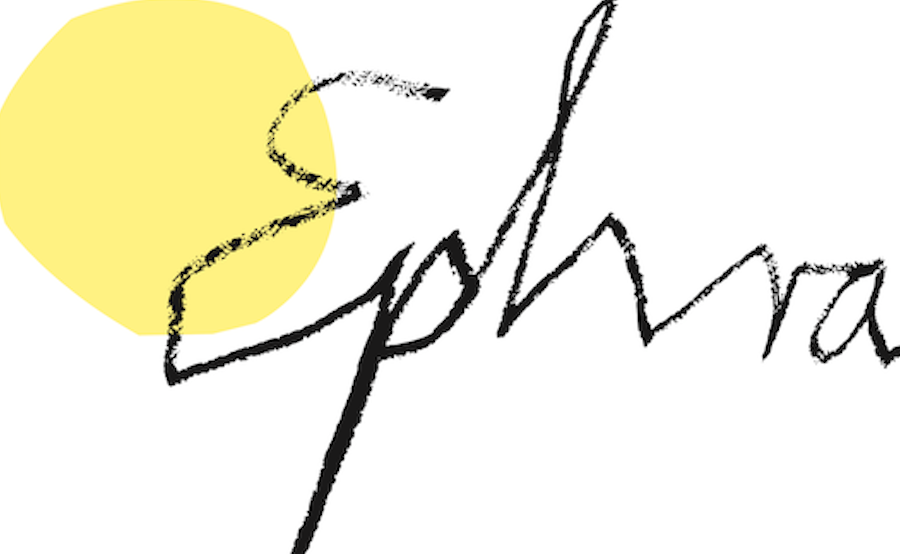Stella Geppert, the sketcher of sleep and body communication
Stella Geppert welcomes us to the sunny backyard of her studio with a mischievous smile that we will see more of today. As a greeting, she shakes our hands one by one. This feels quite normal and a bit strange at the same time – after all, people have come up with the craziest things in recent years to avoid any touching. But we find something else strange: after Stella has shaken all the hands, she starts all over again. After the second round, she tells us that, like a mirror, she has given back to each person the movement and energy she got from them the first time. And that, she says, is actually already her artistic occupation: Absorbing impressions inside like a sponge and giving them back to the outside world in an altered form. She describes our hands and the different consistencies of the bodies when shaking hands. She compares the taking in and giving out with the process of inhaling and exhaling.
When Stella opens the doors of her bright studio to us (which is not very big, but very high, with windows on the ceiling) we also feel a bit like sponges: we sit down in a circle and Stella, without speaking and with a very serious face for once, hands us objects – organs made of rubber, photos of running trees, a heavy form made of clay, a hat with a long antenna. We are very quiet as the objects pass from hand to hand, always being redistributed, finally gathering in a single lap. Stella, meanwhile, holds mirrors in front of us, some of which have holes and others are attached to special frames. After the performance is over, we confront Stella, already quite enriched with impressions: Why do the mirrors have holes? When did she become an artist? And how are the blurry black drawings hanging on long sheets of paper on the walls created?
Stella reveals to us that the mirror has a hole where her face should be when she holds it. Then, when someone looks in the mirror, the person sees themselves with Stella’s face – so the two bodies connect. Even though this hasn’t quite worked out yet (Stella still has to practice a bit, she says), the idea fits well with the organs, which also have nothing to do with a single, “whole” body. Stella seems to have always liked playing with elements, bodies and communication; she was actually already an artist as a child: she tells us that back then she made her entire world out of cardboard and tape. For example, there was a cardboard mailbag that she used to deliver letters. Her trademark was to wear her right boot on the left and her left boot on the right. She was also known for her dazzling mailwoman wake-up call so she could be heard in the streets.
Meanwhile, Stella doesn’t build much out of cardboard. Instead, she dances almost every morning, looks very closely at her surroundings, and most importantly, loves to sleep. Why we actually wake up is one of the questions Stella has dealt with extensively in her recent work. In order to be able to think better about such questions, she records movements on paper. In doing so, she allows the movement itself to be drawn: The pictures on the wall show prints of her body and pillows as she sleeps, so we see different body prints, patterns and shapes.
Stella has also designed a construction to record movements of herself or others while talking. It is a kind of hat with a vertical rod. A piece of charcoal is attached to the end of it, so that every head movement of the person wearing the hat is recorded on the ceiling or wall.
Stella chose coal because it is made of carbon, which we also exhale. When she draws a carbon stroke on paper, we notice that it even sounds like someone is exhaling for a long time. In this way, Stella tries to put herself in her material to understand it better.
So that we too can put ourselves in Stella’s place and better understand the drawing of movements, she gives us branches and brooms in our hands, to the ends of which we attach chalk and use it to walk, sneak, run, sweep or dance across the yard. Some sprinkle chalk dust, others spread the chalk with brooms. Later, Stella tells us that this was a kind of experimental arrangement for a workshop she will soon give in Morocco. She tells us that she often feels uncomfortable and embarrassed explaining to her performers what to do. So it helps her to hear from us beforehand what we enjoyed doing (sprinkling chalk dust!), because hopefully that will make it fun for others as well. We are very excited to see what other impressions Stella has taken in today and which ones she will give back to the world.




